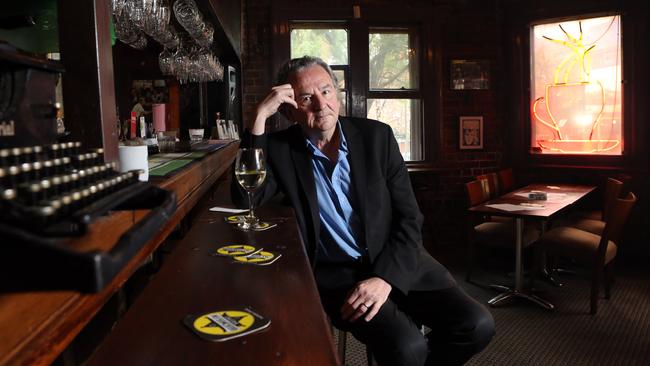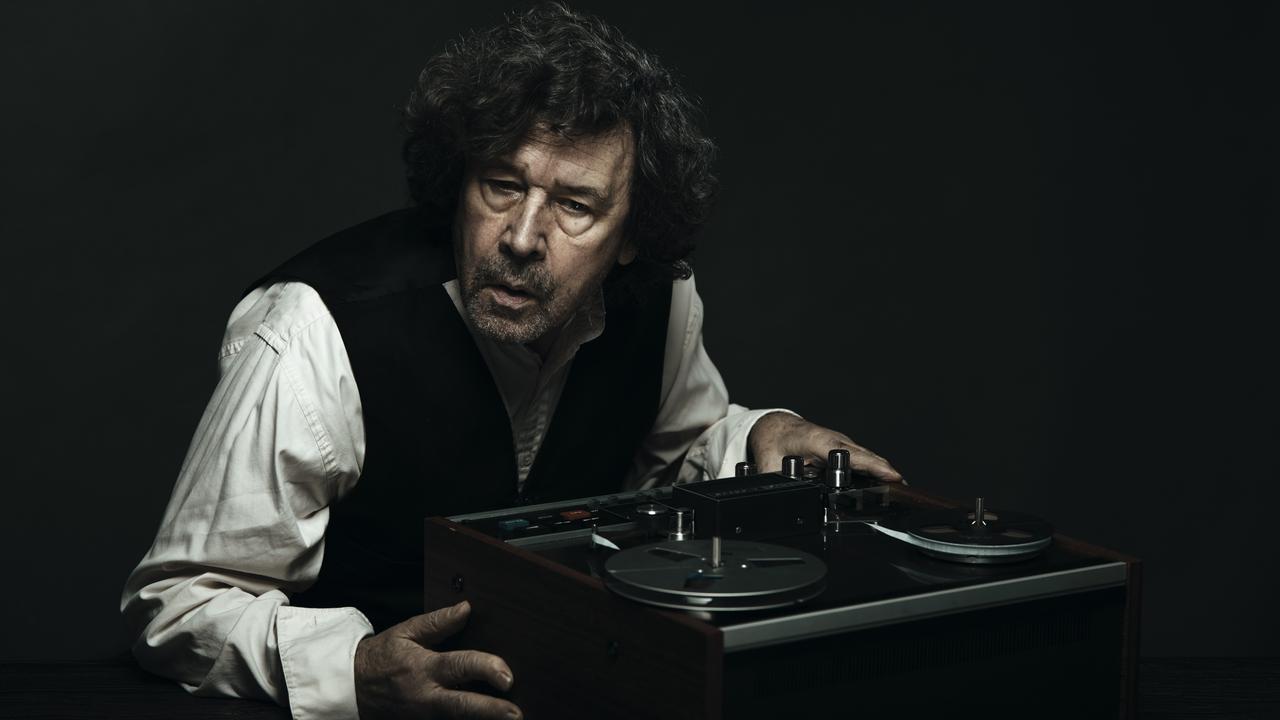Woolloomooloo: A Biography, Louis Nowra’s paean to a suburb
Louis Nowra’s Woolloomooloo: A Biography is a heartfelt paean to the little suburb that could.

It’s a rare profile of Sydney writer Louis Nowra that fails to mention his long-term patronage of the Old Fitzroy Hotel in Woolloomooloo. It’s an easy journalistic go-to (and, as he reveals at one point in Woolloomooloo: A Biography, an easy guidebook go-to as well).
But as Nowra makes clear in this book, the pub, its regulars and the suburb they belong to are far more important to him than the profiles suggest. This isn’t merely somewhere he comes to meet his daily quota of four sauvignon blancs.
This is Nowra’s second bio of a Sydney suburb. Kings Cross: A Biography (2013) was more a eulogy for the suburb than a celebration of it. But Woolloomooloo is a heartfelt paean to the little suburb that could.
Founded as Wallamoolloo Farm in 1793 — the original Aboriginal word has gone through “many permutations because no one could agree on a uniform spelling” — the Loo, as Nowra refers to it, has been reviled for much of its history, its residents subjected to endless moralistic opprobrium when not simply ignored and left to rot.
That it remains a community, a rarer thing in Sydney than is usually acknowledged, is a credit to those who have made it their home and stamping ground. Its continued existence, Nowra argues, is less a blight on the city than a upraised finger to those who would, and have tried to, crush it.
Like the suburb itself, this book is a bit of a mongrel, merging history, walking guide and memoir.
Or perhaps memoir isn’t quite the right word. For while Nowra’s experiences feature heavily, he isn’t exactly writing about himself. He’s rather sketching his friends — the Old Fitzroy’s Motley Crew — and countless other local characters he knows. Many of his closest drinking buddies are afforded short chapters of their own, to the extent that the book’s subtitle could well have been a plural.
The other chapters oscillate between more or less straight-up history and street-by-street descriptions of the suburb. In the introduction, Nowra frames these latter passages as musings born of old-fashioned flanerie, which is a nice idea as far as it goes, though anyone unfamiliar with the area, and even some who know it well, may eventually begin to feel bogged down in these descriptions of the map.
But Nowra’s historical passages, and those sections of his walking tour that he leavens with his research, sing. For the most part, the songs in question are nasty little ditties so grisly that one wonders what horrors the author has left out. Indeed, for much of its length, Woolloomooloo reads like an omnibus of true-crime stories that today’s lockout wowsers could only imagine. The tale of poor Sarah Ogle, who was born to an abusive publican and his intellectually disabled niece, then left to starve during the course of five weeks in an upstairs room of the man’s hotel, is only the most shocking of these.
The book is also a history of the suburb’s resistance to those who would destroy it. Nowra’s chapter on the movement that toppled Sidney Londish and his plans to develop Woolloomooloo beyond all recognition in the 1970s is particularly rousing. “A suburb once notorious for crime, poverty and hopelessness had become an international yardstick for community consultation and planning.” (When he and his wife, Mandy Sayer, meet Londish at an event, the old man tells them wistfully: “I used to own Woolloomooloo.”)
As solid as Nowra is on the city’s gnawing class divide, and as eager as he is to throw in his lot with the underdog, he isn’t without his own biases or above making the occasional value judgment. He dismisses visitors to Tamworth’s Country Music Festival (where he is competing for the title of Australia’s best pub song) as “morbidly obese … an image far removed from the cliche of lean and abstemious country people”. American tourists are later vilified in much the same way: “White, and of retirement age, both men and women wear sexless pastel clothes and new white sneakers. Many are overweight and waddle from the bus.” Such passages leave a bad taste.
But these are niggling concerns and matter little when compared with the aforementioned biographies of his fellow drinkers. (This is nothing if not one of Australia’s great pub books.) The stories are not all happy: one worries about Ritchie, who becomes violent when he goes off his meds, and Nowra’s sense of betrayal, when he tells the tale of a conman who took the regulars for a ride, is palpable.
Anyone who has been a regular at a bar will know from the outset that these stories are par for the course in such watering holes. Anyone who has never been a regular will, on reading of Christmas celebrations at the Old Fitzroy, at the very least find themselves wanting to become one. What’s clear is Nowra doesn’t like the people he’s writing about here. He loves them.
Where does Nowra go from here? After Kings Cross and Woolloomooloo, Darlinghurst or Surry Hills would appear to be the natural next stop. But Surry Hills seems out of the way and the few mentions of Darlinghurst in these pages suggest Nowra isn’t a fan. Maybe he will leave it as a diptych, then? A book about what Sydney once was and one about what it still is?
Indeed, it’s the fact Woolloomooloo still is that’s the book’s most important message. At the end of his short history of Sicily, John Julius Norwich laments that “whereas an account of a specific period can be rounded to an elegant close, one that takes as its subject merely a given region of the world must be brought to an arbitrary end”.
Nowra has no such problem here. Woolloomooloo has never had much elegance, or indeed any need of it, and an arbitrary ending is in fact a victory: Woolloomooloo’s still here, you bastards, and will be for a while yet.
Matthew Clayfield is a journalist and author.
Woolloomooloo: A Biography
By Louis Nowra
NewSouth, 334pp, $34.99


